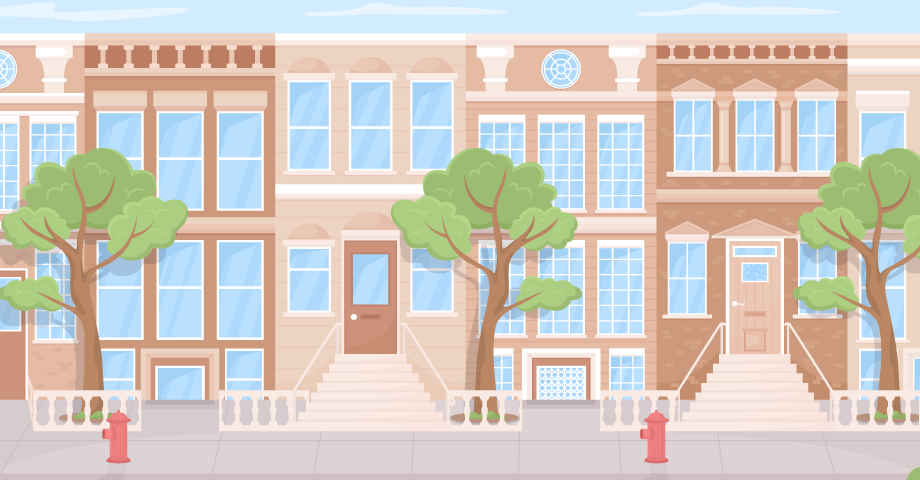For better or worse, real estate investors live and die by the cap rate. A cap rate is the single most ubiquitous representation of yield in real estate investment, and for the last two decades, they have trended in one direction: down.
With a zero or near zero federal funds rate, cap rates have compressed across real estate asset classes. Now, higher interest rates will force a reversal of that well-established trend. To offset the higher cost of capital, cap rates will have to adjust upward.
Cap rates and interest rates are inextricably linked together. Although no one-to-one correlation exists, they have historically trended in the same direction. As interest rates increase, so too does the cap rate. According to Ed Chazen, senior lecturer at Boston College Carroll School of Management, there is traditionally a 3% spread between cap rates and the 10-Year Treasury.
As a standard, investors expect cap rates to trail an increase in interest rates by an average of six months. Even as interest rates have increased rapidly over the last year, cap rates have yet to budge. They remain stubbornly steadfast, despite the higher cost of capital.
Chazen recently sat down with Northspyre to discuss the trajectory of cap rates. Eventually, sellers will have to adjust pricing to reflect the higher cost of capital, but listening to his assessment, the adjustment will vary between asset classes, providing investors with a good indicator of the best places to allocate capital. Here is his forecast of cap rate trends for the three major real estate asset classes and where investors should buy, pause and stop.
Green Light: Multifamily
Historically, multifamily has been considered the most recession-resilient asset class because, as any industry veteran will say, people always need a place to live. That old adage couldn’t be truer today. Housing affordability is at an all-time low. The decade-long problem has been exacerbated by rising interest rates, pushing would-be homebuyers back into the rental market. In addition, there is a severe housing shortage, with the National Multifamily Housing Council estimating that the country needs 4.3 million new apartment units to meet the current rental demand. These factors are helping to buoy multifamily cap rates, even as capital costs increase.
As a result of these strong fundamentals, Chazen expects that the apartment market will be the most durable sector in commercial real estate. During the most recent bull run, national multifamily cap rates compressed to 3.8% for class-A properties, falling from a high of 5.3% and 4.2% for class-B and class-C properties, falling from a high of 6.2%. In this downcycle, Chazen expects multifamily cap rates will stay in the 4% to 5% range, remaining below the peak in the last cycle. Research from Statista supports his forecast, expecting cap rates to range between 4.85% and 5.1% through 2024.
Yellow Light: Industrial
Industrial properties have been the breakout star of the most recent business cycle. The emergence of ecommerce catalyzed a boom in warehouse, distribution, and logistics spaces, driving demand and truly incredible appreciation for industrial properties, both in terms of asset value and rents. Since 2012, industrial cap rates have fallen from 6.14%, the highest in commercial real estate, to 4.1%, second only to multifamily.
While industrial is still an attractive asset class, the fundamentals aren’t quite as resilient as they are for multifamily assets. Ecommerce has driven the historic industrial run over the last decade, and during the pandemic, when people were forced to buy goods online, industrial activity soared. With rising inflation, reduced consumer spending, and a return to brick-and-mortar shopping, ecommerce activity has receded.
Although the long-term outlook for online shopping remains strong, in the near-term, ecommerce companies will see trailing demand and revenues. Chazen noted that Amazon acts as a bellwether for trends in the industrial market, and in the last six months, the company has halted new warehouse construction and has subleased excess warehouse space.
According to Chazen, investors will realize they overpaid for industrial product at a 4% or 5% cap rate, and many will have to make a pricing adjustment.
Red Light: Office
Office is the most at-risk sector, says Chazen. While the pandemic fueled activity for housing and industrial product, it had a devastating impact on office demand. Overnight, office workers transitioned to remote work, and many have yet to return to the office.
Now, higher interest rates and employee layoffs are again reducing demand for office space. An article in the New York Times last year estimated an office surplus of 20% to 40%, depending on the city. According to Chazen, there is a genuine crisis in the office market, and the stark reality is that many office buildings will see high vacancy levels.
In the last decade, office cap rates remained stable, hovering at 4.3% to 4.2% for several years. In 2021, when it became clear that remote work would become a permanent fixture in the office market, cap rates for the asset class soared to 5.8%. Chazen expects cap rates to continue climbing as office owners face demand challenges.
A study from professors at New York University and Columbia predicted that office values nationwide would fall by 39%, representing a loss of $459 billion. Cap rates will likely continue to rise to reflect the valuation adjustment.
Although cap rates will adjust alongside interest rates, it’s clear that core property fundamentals will still dictate pricing and asset performance. Regardless of the asset class, properties with strong underlying demand dynamics and stable income will continue to perform well, regardless of the economic environment.
Data and analytics technology, like Northspyre, will help developers properly vet potential investments and developments to make better and more informed decisions. By combining technology with strong core investment practices, developers will find ample opportunity to generate healthy yields on real estate investments.



